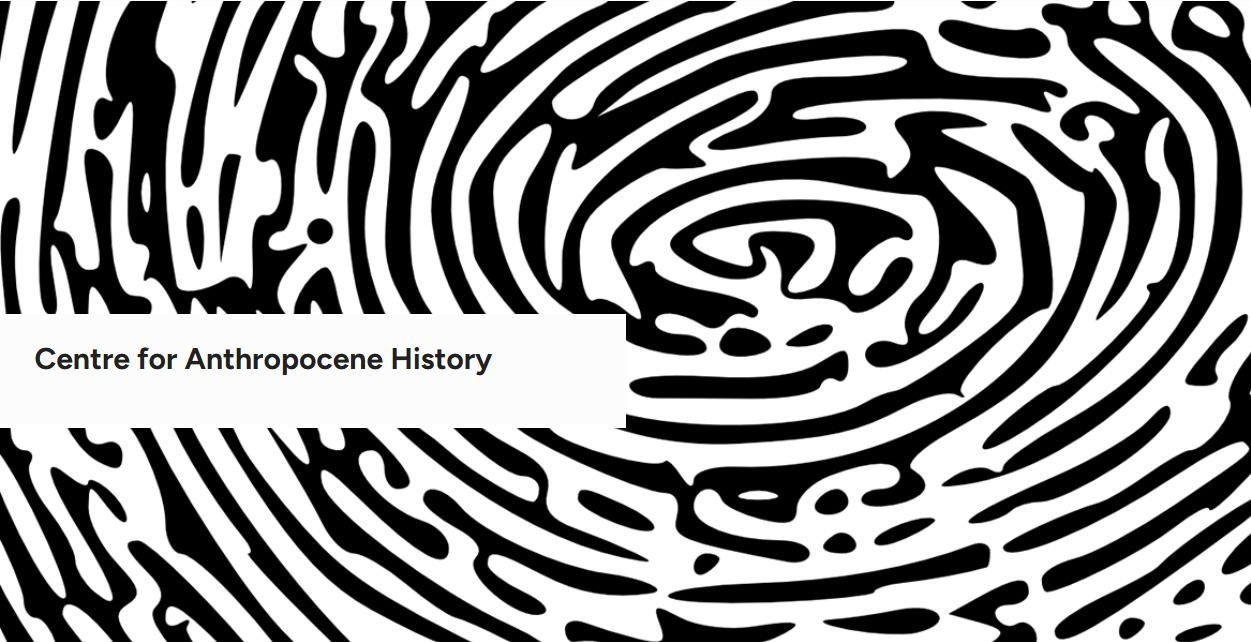
12 Oct New Journal: Anthropocene History
The Centre for Anthropocene History at KTH Royal Institute of Technology (KTH) and Duke University Press are pleased to announce the upcoming launch of Anthropocene History, the first scholarly journal dedicated to exploring the historical dimensions of the Anthropocene. Developed by the Centre for Anthropocene History team, Anthropocene History is a platinum open access journal that provides a unique forum for understanding the intertwined histories of humans and th e Earth in an era of profound planetary change.
The first issue of the journal will be published in October 2026, after which issues will be published biannually. We are welcoming contributions for the inaugural and subsequent issues. We are in the process of setting up the journal’s official website as well as online submission portal. Until that process is complete, submissions can be sent to the Centre for Anthropocene History at anthropocene@kth.se.
Aim and scope
Anthropocene History is a peer-reviewed open-access journal that aims to further understanding of the interconnections between human and Earth history, contemporary and older. We welcome contributions that advance theoretical underpinnings of historical Anthropocene studies, as well as case-oriented research. While the disciplinary basis of the journal is in history, we encourage non- traditional contributions that cross disciplinary boundaries. The overall aim of the journal is to develop a new field where historical and historiographical studies are both informed and reformed by the recognition of the new human-Earth relationship that the Anthropocene concept reflects.
Submission guidelines
Anthropocene History publishes four different kinds of contributions: original research articles, perspectives, commentaries and reviews. We also invite proposals for special sections. Information on these formats and on how to submit a proposal to the journal is provided below. All submissions made to the journal should be the original work of the author(s) and should not have been published or be under consideration for publication with another journal or publisher. All word counts are inclusive of notes and references.
Original research articles should be 6,000–8,000 words in length, with exceptions possible for review articles or similar, which may be up to 12,000 words. Research articles are peer-reviewed following standard academic double-blind procedures.
Perspectives should be 1,500–6,000 words in length. This section welcomes contributions that offer new ideas and/or adopt a non-traditional format. These contributions are peer-reviewed following standard academic double-blind procedures.
Commentaries should be around 1,000 words in length and respond to a previous publication in the journal or other development in the field. Commentaries are moderated by the editorial team.
Review essays should be 1,000–2,000 words in length. They should offer in-depth discussion of new and/or significant texts or events (such as an exhibit) relevant to the Anthropocene field. Reviews are moderated by the editorial team.
Special sections are proposed and managed by one or more guest editors. They should include 3–5 individual contributions, totalling 15,000–25,000 words, including an introduction by the editor(s). As the word count indicates, research articles included in special sections are expected to be somewhat shorter than regular research articles. Proposals for a special section can be sent directly to the editors (susanna.lidstrom@abe.kth.se or sverker.sorlin@abe.kth.se) and should include a motivation
for the special section, a detailed outline of the contributions to be included, and a timeline. Decisions on special sections are made by the journal’s management and editorial teams. Contributions to special sections are peer-reviewed following standard academic double-blind procedures.
Formatting contributions
Anthropocene History uses The Chicago Manual of Style, 18th edition. Submissions should be formatted in 12-point Times New Roman, left justified, and 1.5 spaced. No indication of the author’s identity or institutional affiliation should be included (so as to facilitate standard blind peer review). Please remove any references to the author’s own work that could give away their identity. Headings should be in on a separate line but otherwise formatted the same as the main text.
Editorial team
Editors
Susanna Lidström and Sverker Sörlin, KTH Royal Institute of Technology (KTH)
Associate Editors
Sabine Höhler, KTH
Adam Wickberg, KTH
Fredrik Albritton Jonsson, University of Chicago
Kati Lindström, KTH
Thomas Simpson, University of Warwick
Sandra Swart, Stellenbosch University
Thomas Turnbull, Max Planck Institute for the History of Science
Editorial Assistant
Lakin Anderson, KTH
Editorial Advisory Board (under construction)
Debjani Bhattacharyya, University of Zurich
Dipesh Chakrabarty, University of Chicago
Deborah Coen, Yale University
Nicolas Cuvi, FLACSO Ecuador
Thom van Dooren, University of Sydney
Gabriele Dürbeck, Uni Vechta, Berlin
Helge Jordheim, University of Oslo
Jessica Lehman, Durham University
Achille Mbembe, WITS Institute for Social and Economic Research, Johannesburg
Simone Müller, University of Augsburg
Ursula Münster, University of Oslo
Naomi Oreskes, Harvard University
Buhm Soon Park, KAIST, Korea
Surabhi Ranganathan, University of Cambridge
Jürgen Renn, Max Planck Institute of Geoanthropology
Giulia Rispoli, University of Venice
Libby Robin, Australian National University
Christoph Rosol, Max Planck Institute of Geoanthropology
Julia Adeney Thomas, University of Notre Dame
Kathryn Yusoff, Queen Mary University of London
Jan Zalasiewicz, University of Leicester



Sorry, the comment form is closed at this time.